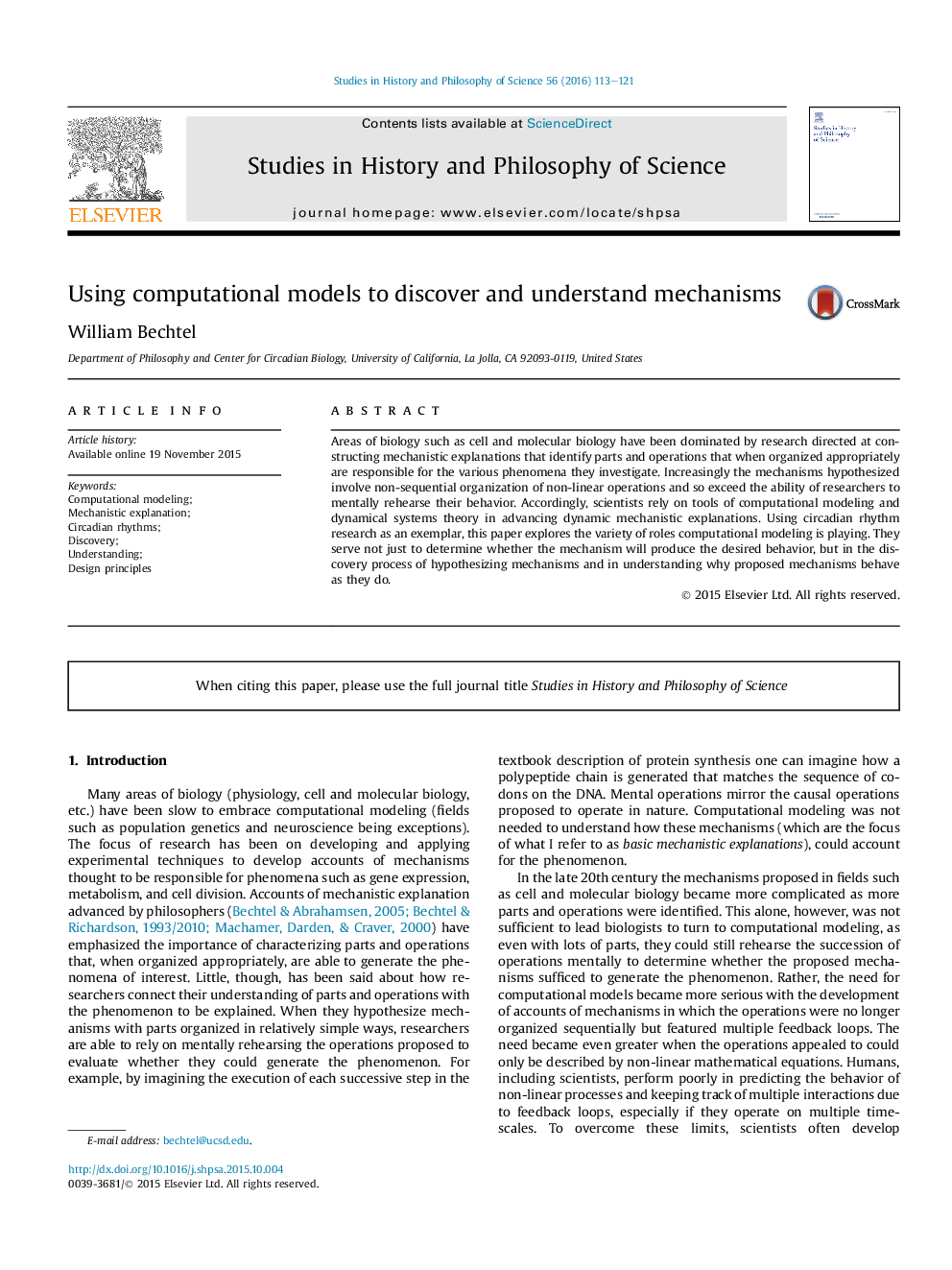| Article ID | Journal | Published Year | Pages | File Type |
|---|---|---|---|---|
| 7551667 | Studies in History and Philosophy of Science Part A | 2016 | 9 Pages |
Abstract
Areas of biology such as cell and molecular biology have been dominated by research directed at constructing mechanistic explanations that identify parts and operations that when organized appropriately are responsible for the various phenomena they investigate. Increasingly the mechanisms hypothesized involve non-sequential organization of non-linear operations and so exceed the ability of researchers to mentally rehearse their behavior. Accordingly, scientists rely on tools of computational modeling and dynamical systems theory in advancing dynamic mechanistic explanations. Using circadian rhythm research as an exemplar, this paper explores the variety of roles computational modeling is playing. They serve not just to determine whether the mechanism will produce the desired behavior, but in the discovery process of hypothesizing mechanisms and in understanding why proposed mechanisms behave as they do.
Keywords
Related Topics
Social Sciences and Humanities
Arts and Humanities
History
Authors
William Bechtel,
